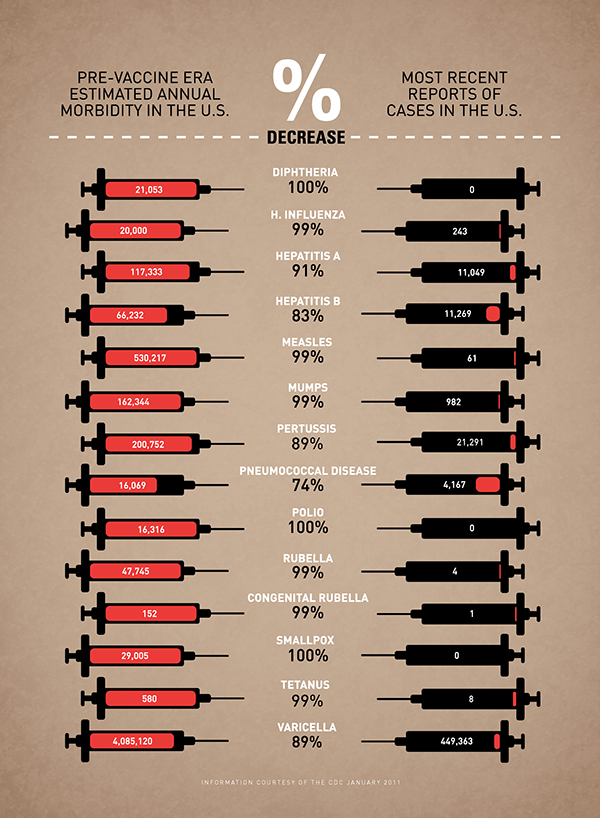
In 1796, the British doctor Edward Jenner developed the first vaccine to fight a contagious disease–in this particular case, the smallpox virus. Since then vaccines have helped eradicate, or firmly control, a long list of diseases–everything from diphtheria and the measles, to rubella and polio. Designed by Leon Farrant in 2011, the infographic above reminds us of the miracles brought by vaccines, showing the degree to which they’ve tamed 14 crippling diseases. Before too long, we hope COVID-19 will be added to the list.
For the data used to make the graphic, visit this document online.
If you would like to sign up for Open Culture’s free email newsletter, please find it here. It’s a great way to see our new posts, all bundled in one email, each day.
If you would like to support the mission of Open Culture, consider making a donation to our site. It’s hard to rely 100% on ads, and your contributions will help us continue providing the best free cultural and educational materials to learners everywhere. You can contribute through PayPal, Patreon, and Venmo (@openculture). Thanks!
Related Content:
How Do Vaccines (Including the COVID-19 Vaccines) Work?: Watch Animated Introductions
19th Century Maps Visualize Measles in America Before the Miracle of Vaccines
How Fast Can a Vaccine Be Made?: An Animated Introduction


The history pre-Jenner is also fascinating. See Steven Shapin’s review, A Pox on the Poor in a recent LRB: https://www.lrb.co.uk/the-paper/v43/n03/steven-shapin/a‑pox-on-the-poor:
“In fact, by the time British doctors encountered Turkish smallpox practices, inoculation was neither new nor did it belong to Western science. For centuries the Chinese had been blowing dried, ground-up smallpox material up the nose, and Arabs had been introducing pus under the skin. Inoculation had long been widespread in North and sub-Saharan Africa. In Boston, inoculation was introduced during a smallpox outbreak in 1721, promoted by the Puritan minister Cotton Mather, who learned of the practice from his recently acquired slave – ‘my Negro-man Onesimus, who is a pretty Intelligent Fellow’. Onesimus had been inoculated himself and told Mather that it was common practice in his African homeland – possibly the area that is now Ghana. ‘Whoever had ye Courage to use it,’ he said, ‘was forever free from the Fear of ye Contagion.’ The Brahmins in India had used inoculation for hundreds of years, maybe longer, and there were reports of inoculation in 17th-century Denmark, Switzerland and Poland. Inoculation had arrived in Constantinople only decades before Lady Mary’s visit, brought by Circassian and Georgian traders, who may have learned it from either Eastern or African sources. And as early as 1600, inoculation was folk medical practice in Pembrokeshire, where it was popularly known as ‘buying the pocks’.”
Also Jenner had his own anti-vaxers” do a search for James Gillray’s vaccination cartoon from 1802.